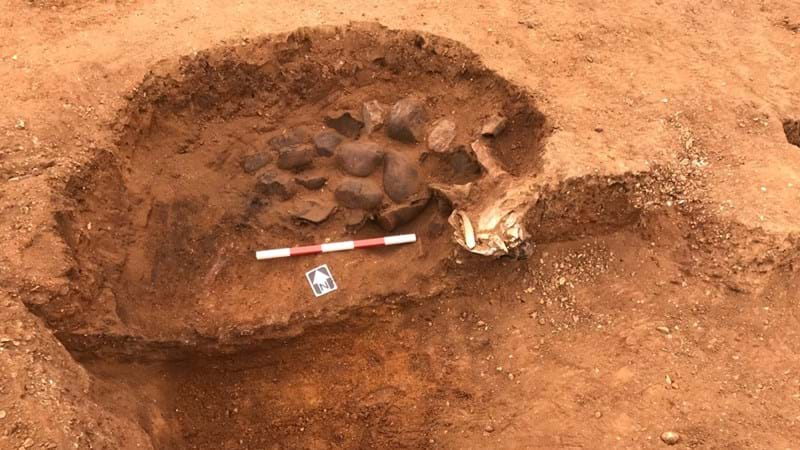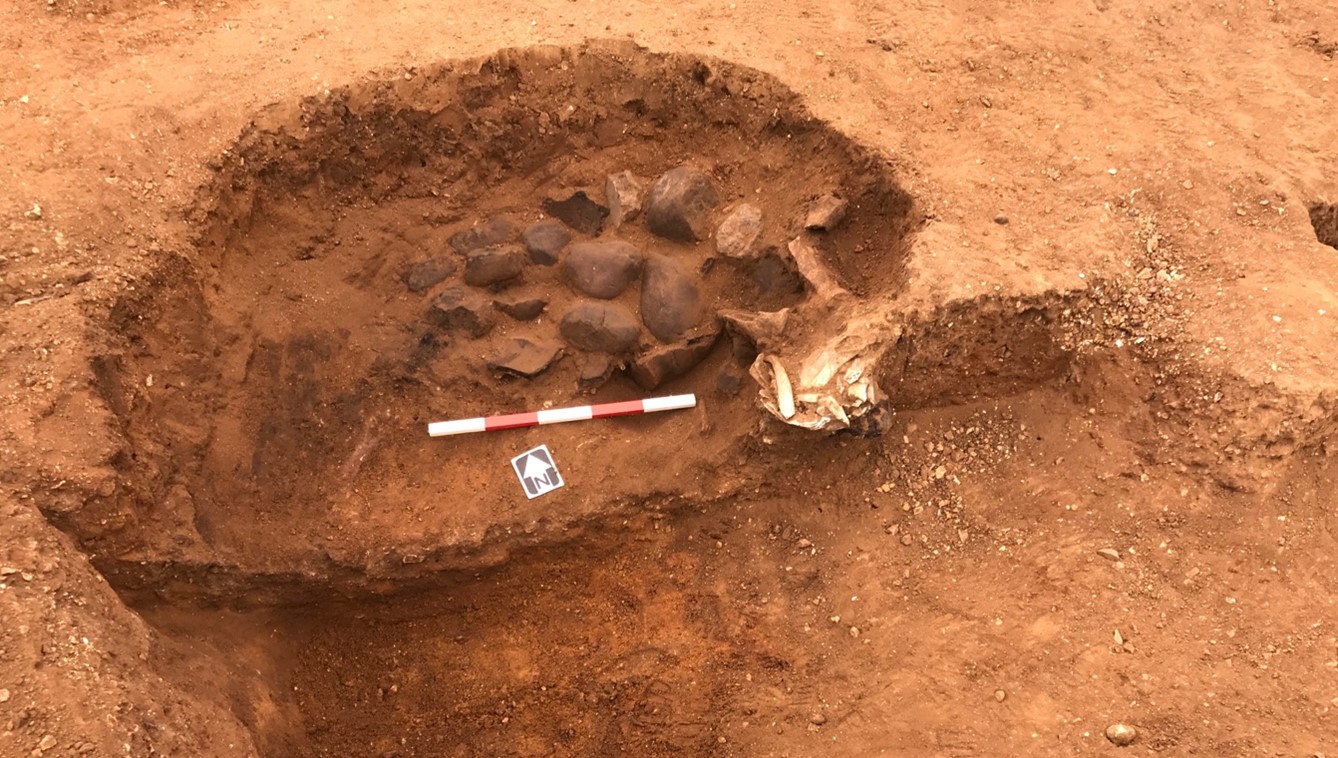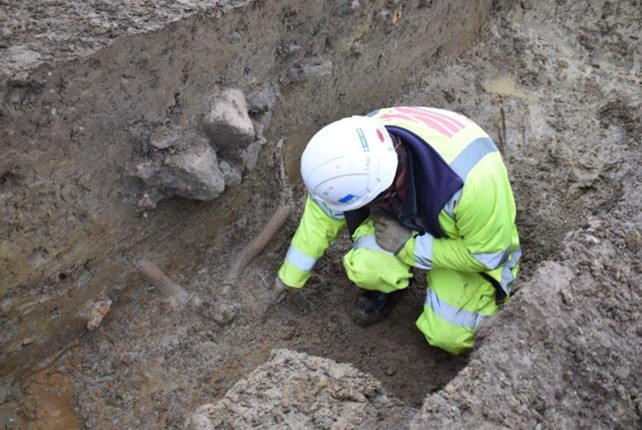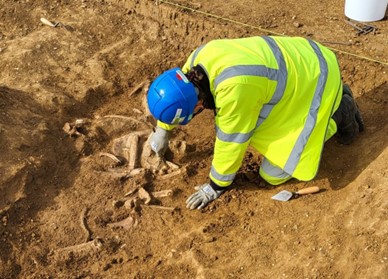Animal bones on the A428
Published
16 Dec 2022
Archaeologists at Museum of London Archaeology (MOLA) have found evidence of a huge communal feast at the Iron Age farmstead they are excavating as part of our A428 Black Cat to Caxton Gibbet improvements!

Share this article
During the Iron Age (800 BC- 43AD) in Bedfordshire and Cambridgeshire, communities did not always live together in large settlements. So, for special occasions or important times of the year people would get together and celebrate at a central meeting site – our Iron Age farmstead may have been one of these places!
But what does this have to do with animal bone? Well, fortunately, it turns out people in the Iron Age liked doing the washing up about as much as we do…so after the feast they tipped all of their rubbish, including cooking pots and animal bones, into a big pit! And over 2000 years later our Field Team discovered this jumble!

[Image: Animal bones in a pit]
The pit might not look like much, but it’s a really exciting find for archaeologists! We caught up with MOLA Environmental Archaeologist Yasmine, to find out more about the animal bone from the feast.
Question: First of all, what does an environmental archaeologist do?
Answer: We explore how people interacted with the natural world in the past. This is everything from what plants they were eating, the trees which were growing in the area, and of course archaeozoology - that’s the study of animal remains such as bones and shells.
Question: So, you’ve been looking at some of the bone from our Iron Age feast – what can you tell us about it?
Answer: Because the bones have been in very sandy ground, unfortunately they are not well preserved. But I have been able to identify cattle and sheep/goat (sheep and goat bones are very similar!). In the Iron Age we know people usually ate meat from cattle, sheep, and pigs, so this matches up with that.
What they were eating also tells us about their farming practices, such as the animals they were keeping. Some of the sheep/goats from the feast pit were juveniles (under 1 year of age), so this tells us that they were being farmed for their meat, as opposed to wool or milk.
Question: What happens next?
Answer: Although the bone is not well preserved, because of the type of soil, we will still continue to carefully examine every piece of animal bone, so we can understand which animals they were keeping at the farmstead. Even if we only have a small amount of bone, it can give us a lot of detail. For example, if we have a just a horse canine tooth, we are able to find out quite a lot about the animal – not least that they were probably male, as female horses usually don’t have canine teeth!
Of course, animals in the Iron Age weren’t just peoples’ meals! Here are two more fascinating finds from the ongoing A428 excavations...

[Image: Deer antlers]
This complete set of deer antlers were found in a ditch, which we currently think dates to the Iron Age (800 BC- 43AD). Antler was a very important material in Prehistoric Britain and was used to make handles for tools, as well as combs, needles, and lots of other objects!

[Image: Horse skeleton]
A horse skeleton in another ditch! This one probably dates to the Roman period (43 AD – 410 AD). Horses were an important part of daily life in Roman Britain. This horse would have provided residents of the Roman farmstead with a reliable mode of transport around the countryside, perhaps taking their goods to a local market. The horse skeleton is actually disarticulated – this means it was buried in pieces, rather than as a complete skeleton. Maybe it was easier to bury it this way.
MOLA’s A428 excavations are continuing, so make sure you keep an eye on social media for updates from the field, including any future animal bone discoveries!
